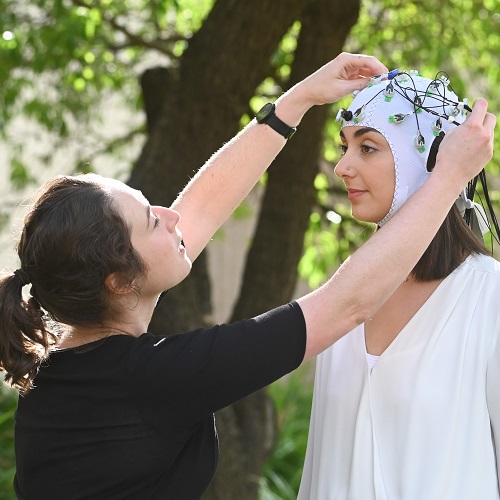Pint of Science brings latest research to locals

Photo by Catherine Leo
Have you ever walked into a room and immediately felt energized, calm, or drained? What if the design of the building gave you that feeling? Although it is estimated that we spend at least 80% of our lives indoors, there is little research on the effects this has on our brains and bodies.
Next week, the postdoc Dr. Isabella Bower from the University of South Australia (UniSA) will address this important knowledge gap and explain to local pub patrons in Adelaide how aspects of the design of built environments (like the size or color of a room) affect us.
dr Bower is one of three UniSA researchers leaving the lab and entering the Wheatsheaf Hotel in Thebarton as part of Pint of Science Australia, returning for the eighth time on 22-24 May 2023.
Pint of Science is an international festival taking place in more than 400 cities worldwide. This year the Pint of Science Australia Festival is taking place in 30 pubs across 15 cities including Adelaide. Attendees can enjoy a pint of their favorite drink while listening to fascinating talks from science communicators and experts in their respective fields.
“My research examines whether we can improve brain function and mental health by understanding how building design affects us,” says Dr. bower This includes places like our homes, offices, schools and hospitals.
dr Bower has conducted a series of experiments to better understand the effects of being inside a building, using virtual reality to alter the indoor environment and other specialized devices to record temperature, humidity, air movement and sound levels. These include changes in brain activity when we perform a task in these spaces that is reminiscent of something we do every day — such as concentrating on writing a difficult work report or trying to read a co-worker’s facial expression.
“Electrodes on the scalp capture brain activity in different environments, providing information about attention, cognitive performance and emotional processing. Heart rate, breathing and sweat response also reveal how people react to certain settings without even being aware of it.”
Hopefully, the information gleaned from these experiments will one day be used to design better buildings — where people can be happier, healthier, and hone their skills.
The area of expertise of Dr. Bower is commonly referred to as “environmental psychology,” an emerging field of research that studies the relationship between individuals and their physical environment, including both natural and man-made environments such as buildings.
“Although this area of research is relatively new, it continues to grow as research on climate change and virtual environments expands.”
dr Bower hopes that her research will one day result in psychological guidelines for building design that will translate science into policy and practice and highlight the importance of good design for human health and cognition.
“We spend at least 80% of our time indoors, so it’s important that we get it right. This research has the potential to make a huge difference in the lives of people across society.
“How do rooms affect jury decisions, student exam performance, and patient recovery in a hospital? These are all very real scenarios that we need to explore further.”
dr Bower will present her research “Buildings and Brains” on Monday 22 May at 6.30pm at the Wheatsheaf Hotel as part of the Optimize Your Mind session. She is also hosting a special online event entitled “Shining the light on Environmental Psychology in Australia” ahead of the festival on Wednesday 17 May at 12pm.
Two other UniSA researchers will also be giving Pint of Science talks on Tuesday, May 23 at the Wheatsheaf Hotel as part of the Battling the Bugs sessions:
The unexpected talent of the lymphatics
The postdoc at the Center for Cancer Biology, Dr. Anna Oszmiana and her colleagues have discovered a site in DNA that controls the ability of the lymphatic vessels to produce blood cells. This opens up new possibilities for treating infections and anemia.
Seeing the invisible bacteria with tiny droplets of fat
UniSA PhD student Santhni Subramaniam uses nanotechnology to transport antibiotics through cells in small fat droplets, making it more effective at fighting elusive harmful bacteria in the body.
To book for the Pint of Science Festival in Adelaide go to: https://pintofscience.com.au/events/adelaide